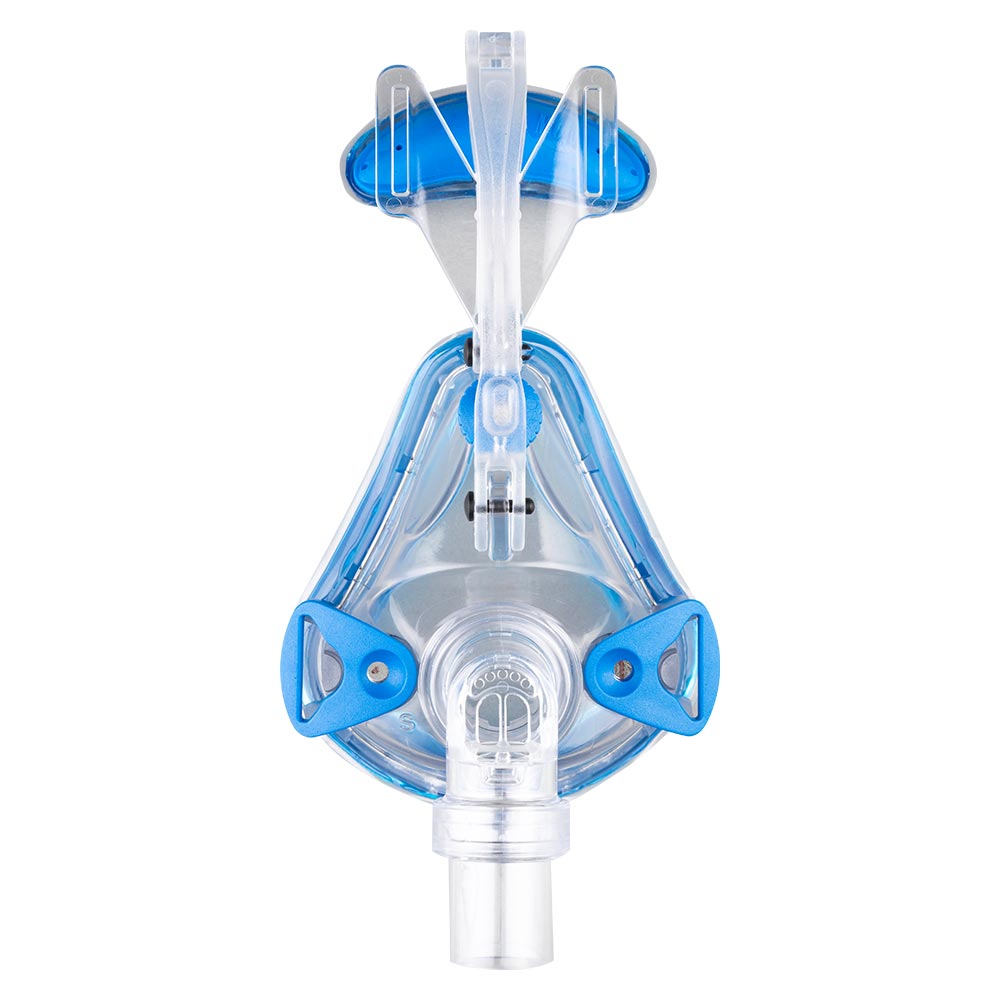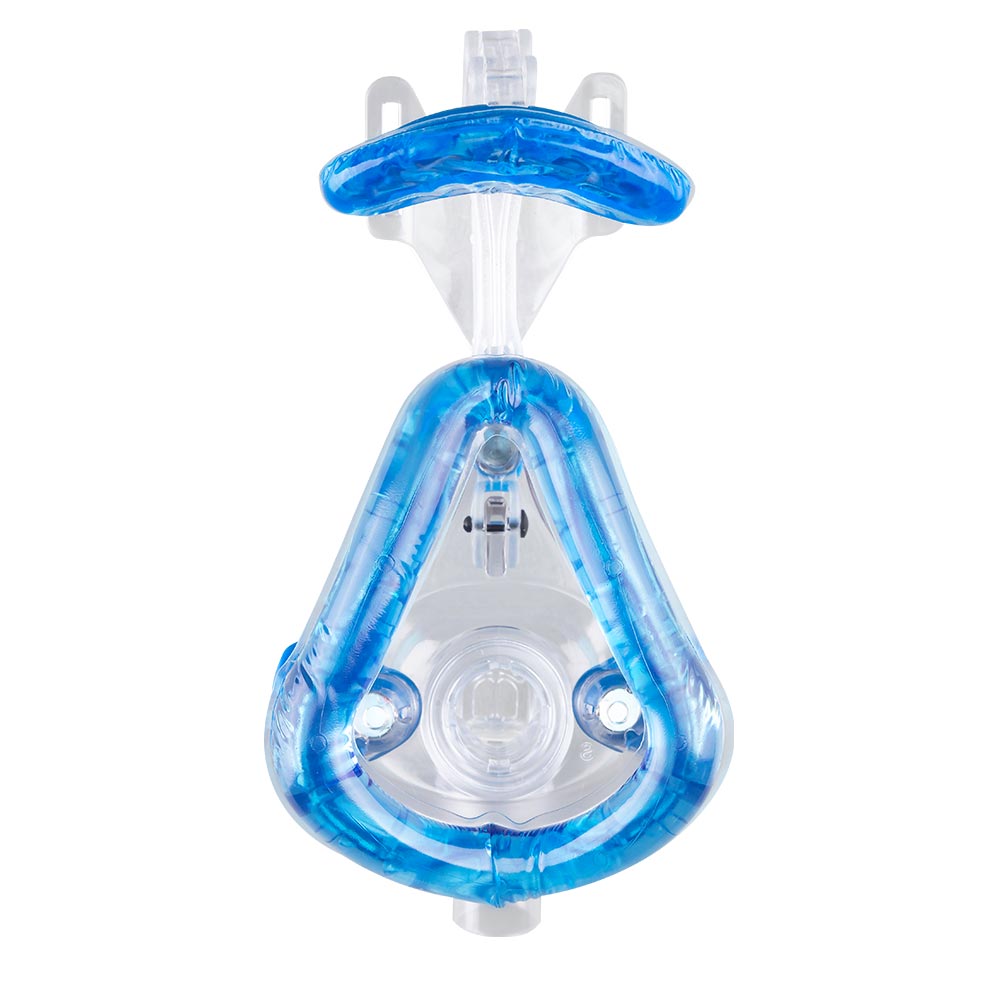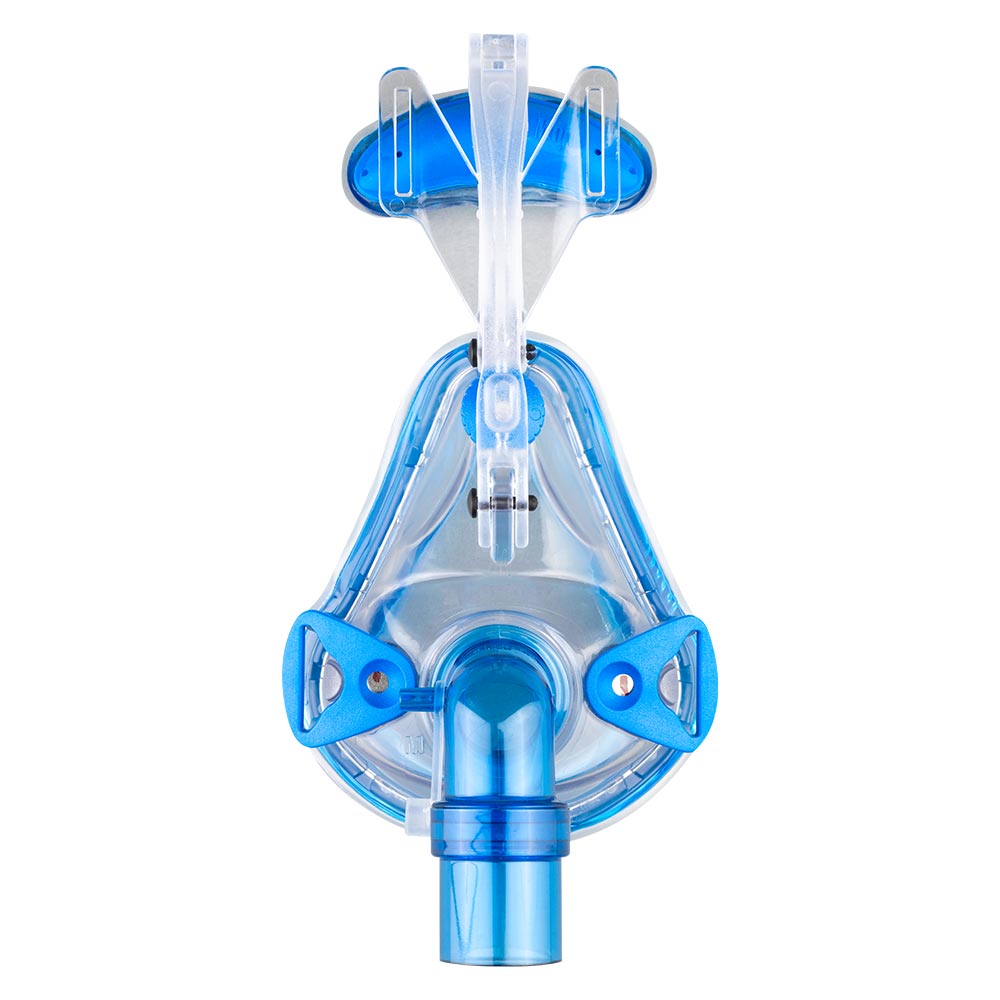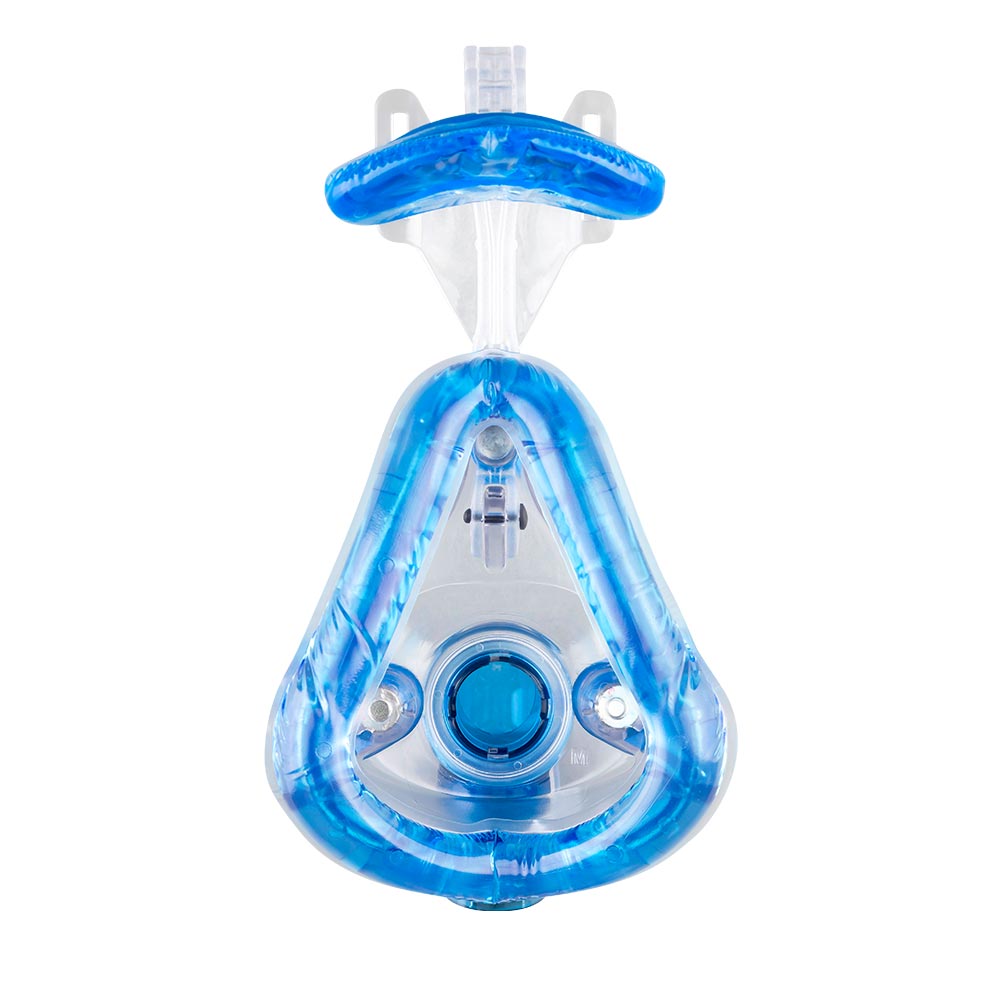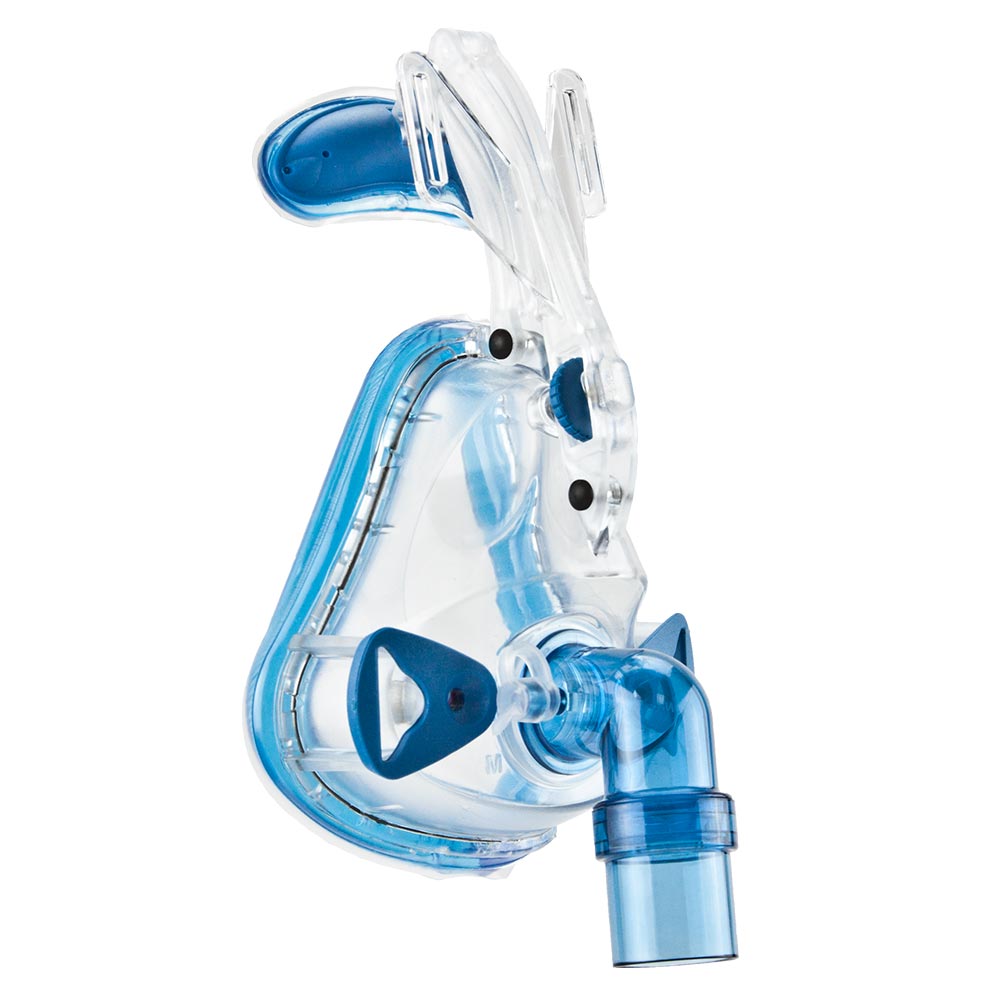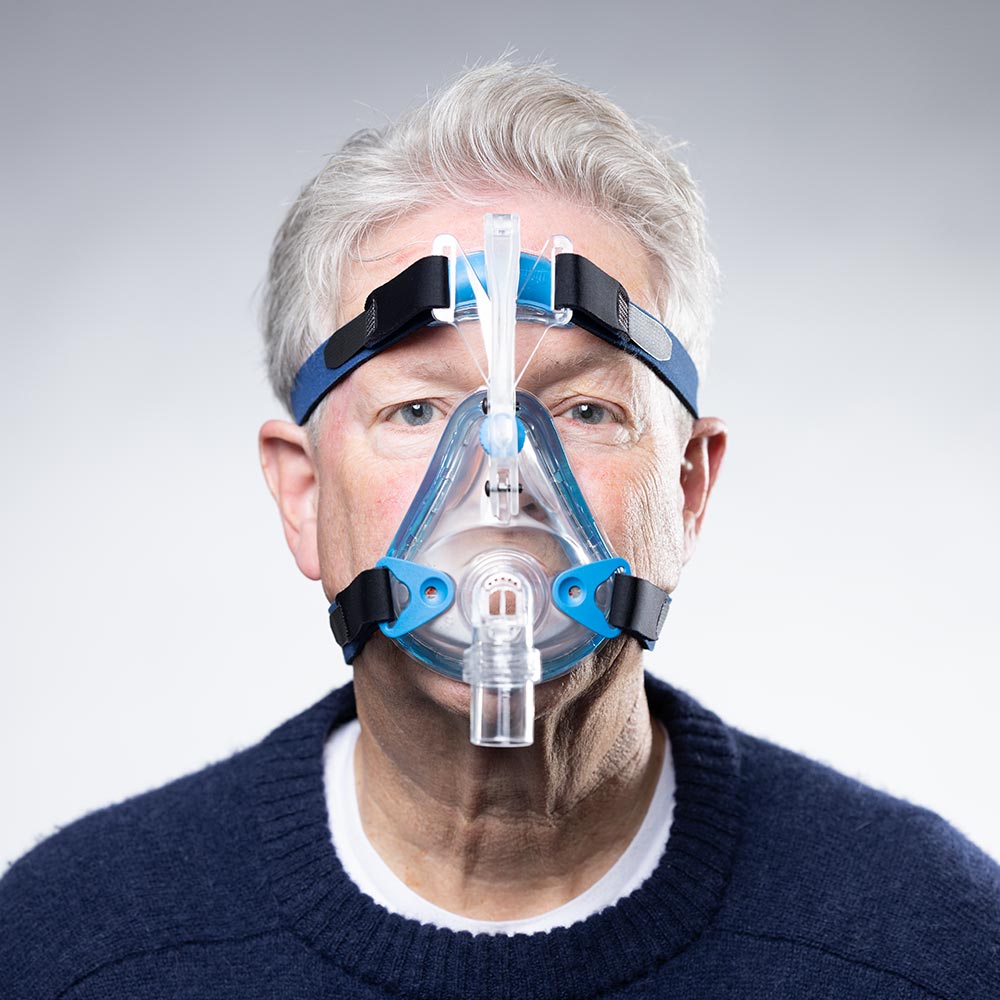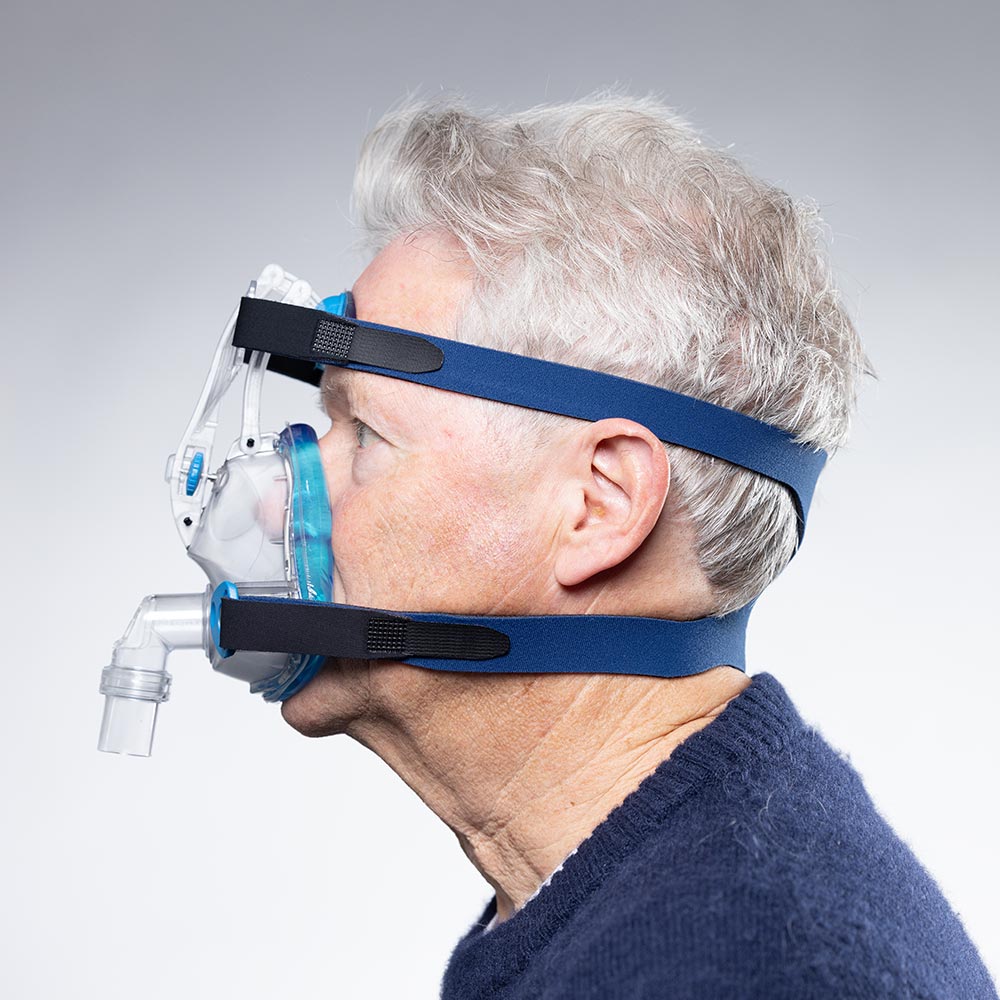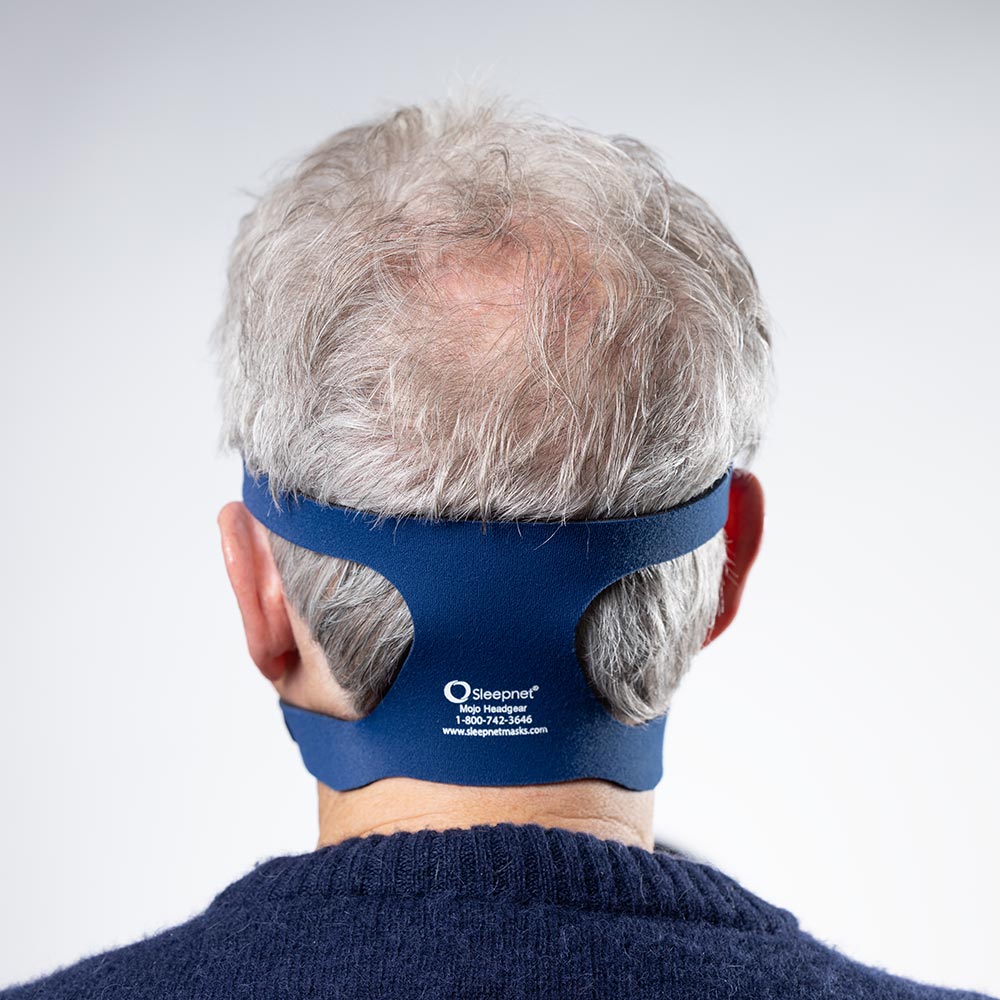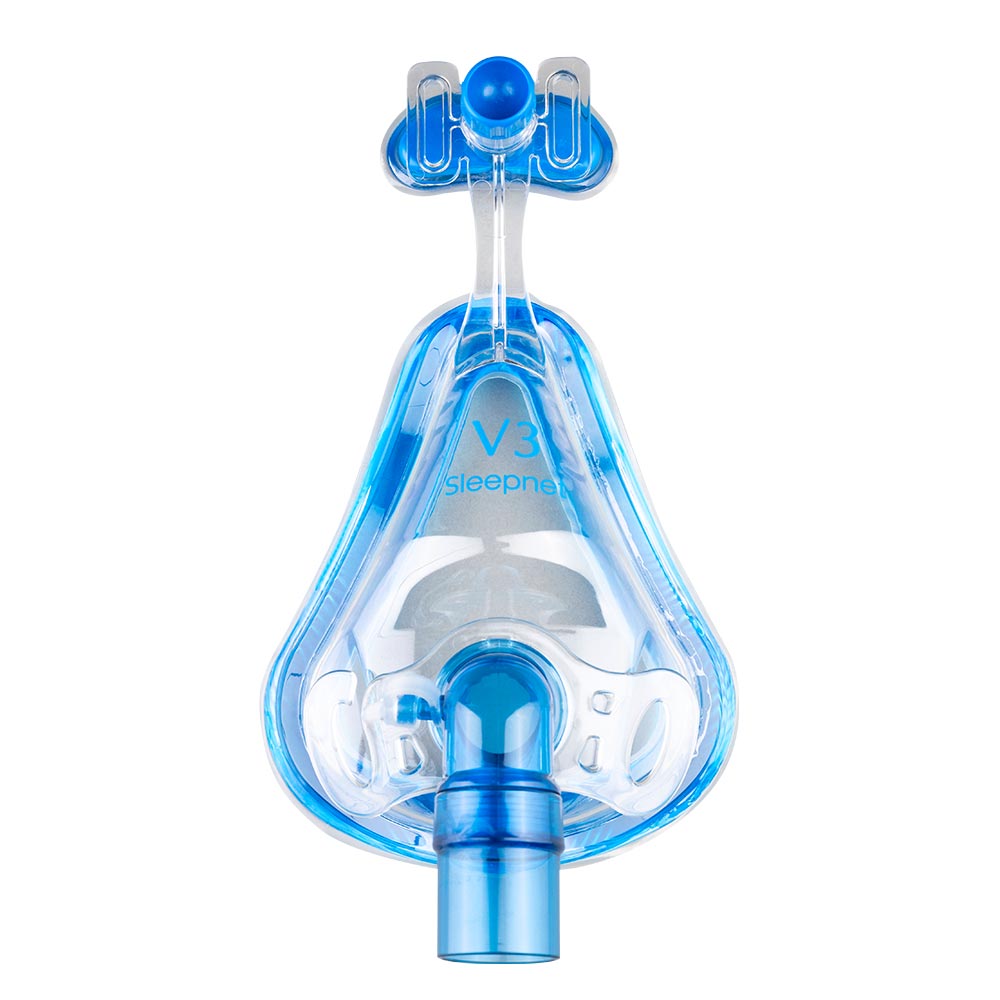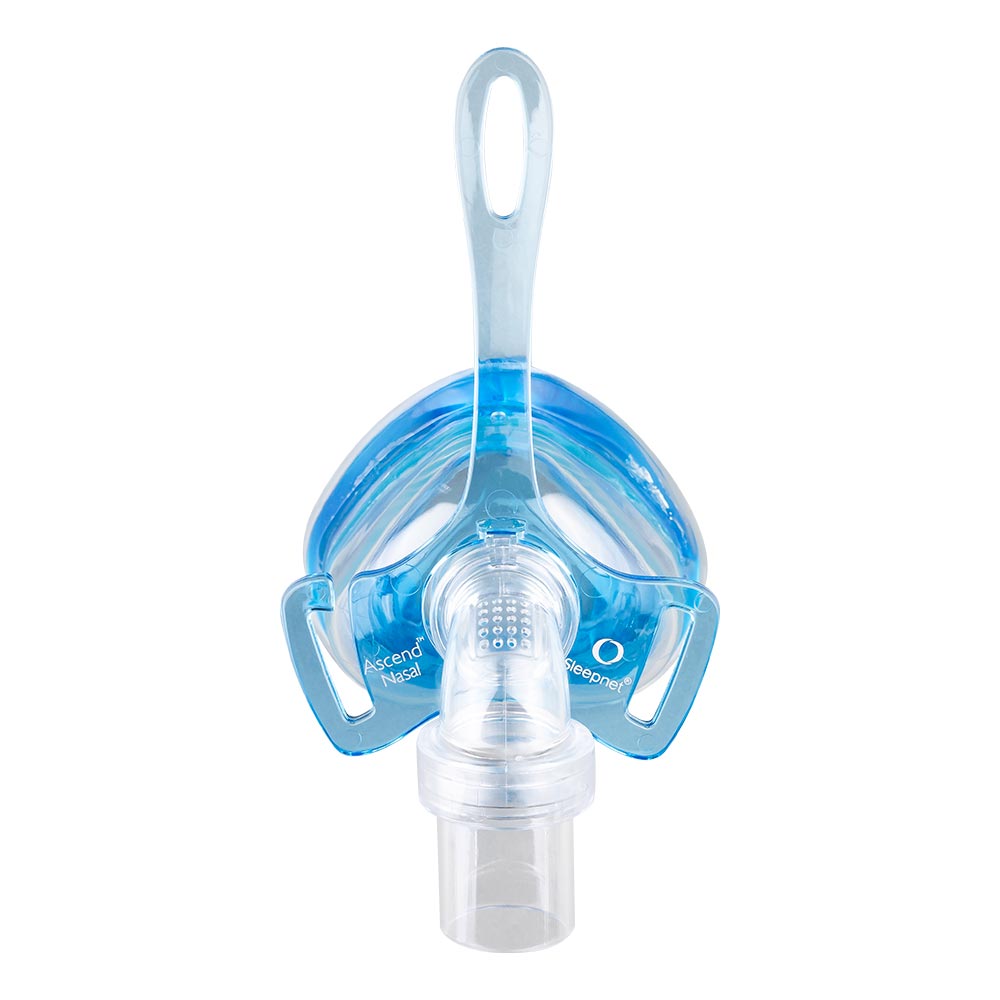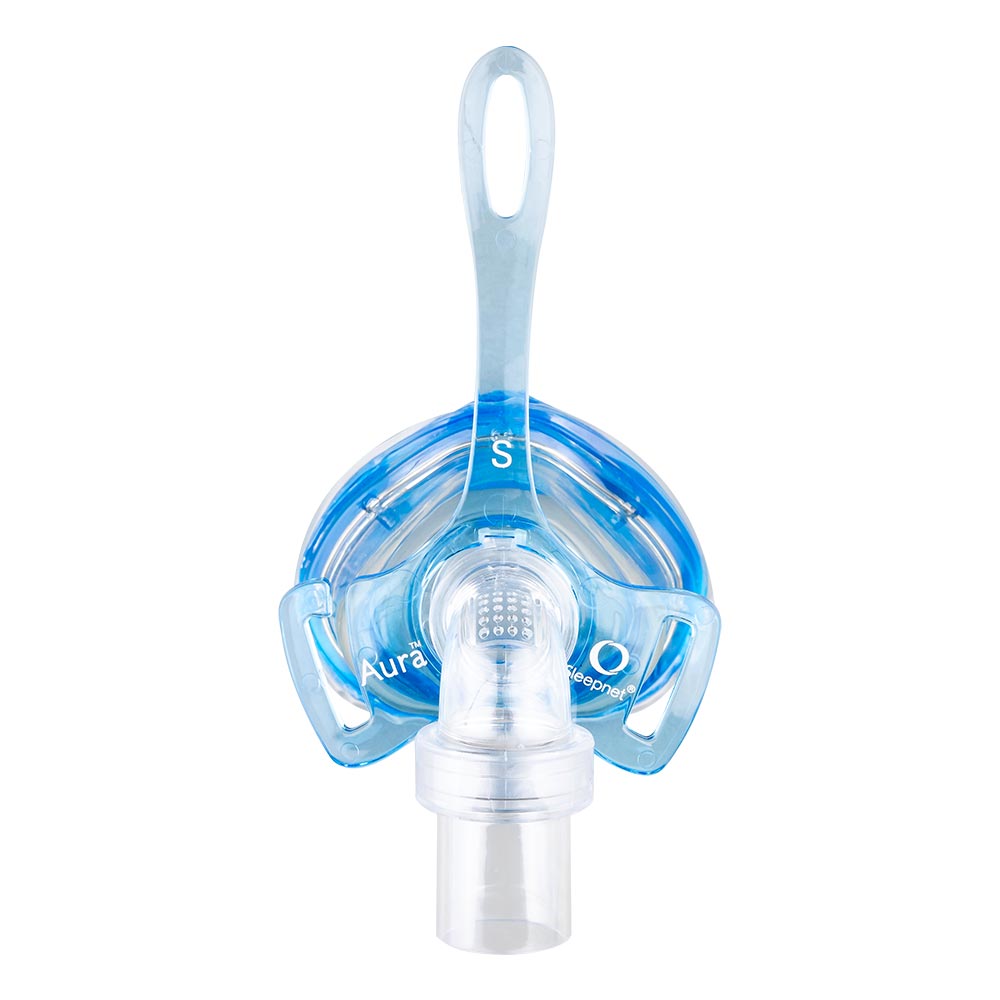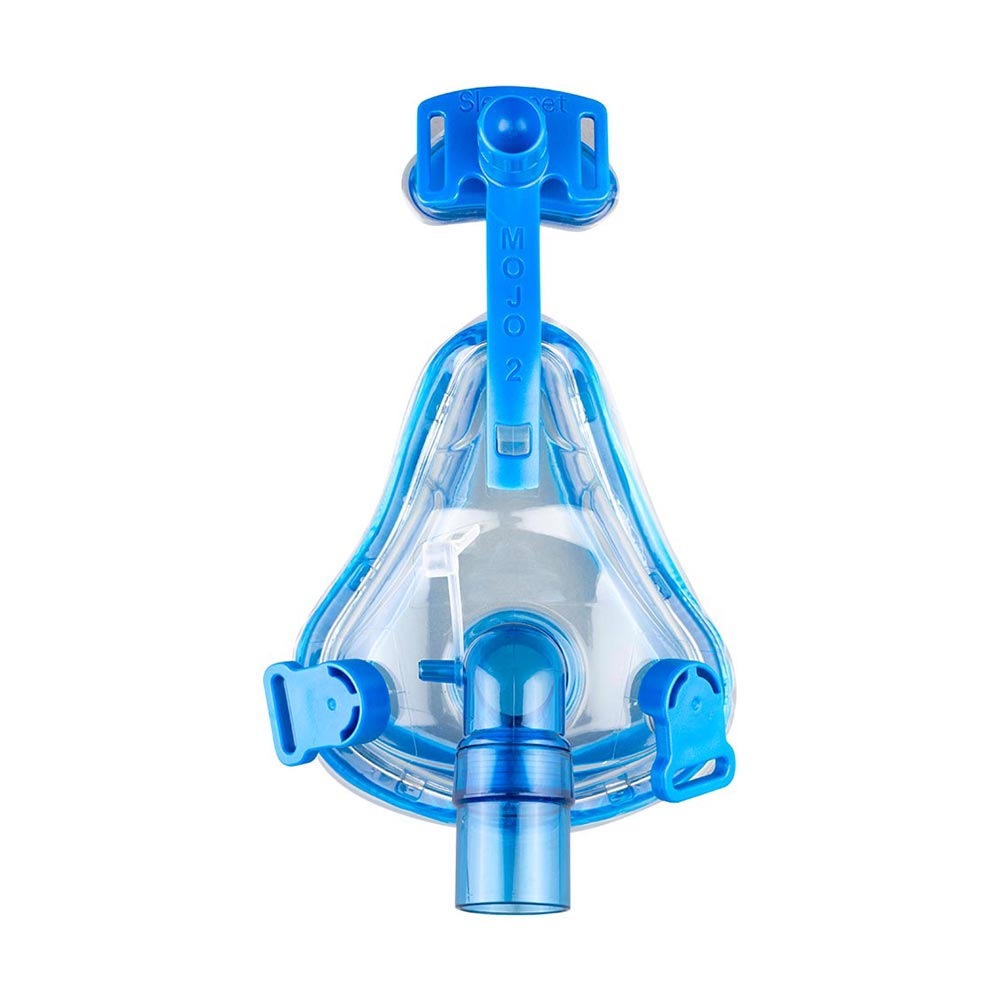© 2025 Sleepnet Corporation. All Rights Reserved.
Privacy Policy | Terms & Conditions | Legal | M90049 Version 7
Details
Available in four sizes (S, M, L, and XL), the Mojo® is designed to accommodate most facial features while providing optimal fit and maximum comfort.
The Mojo® Full Face Mask uses Sleepnet’s AIR°gel® cushion featuring Custom Fit Technology, which provides superior stability and a comfortable seal while minimizing skin irritation.
Key Benefits:
- Comfort
- Personalized fit
- Adjustable
- Easy on and off
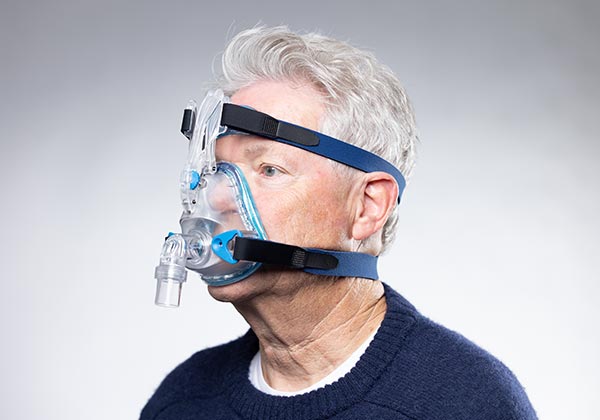
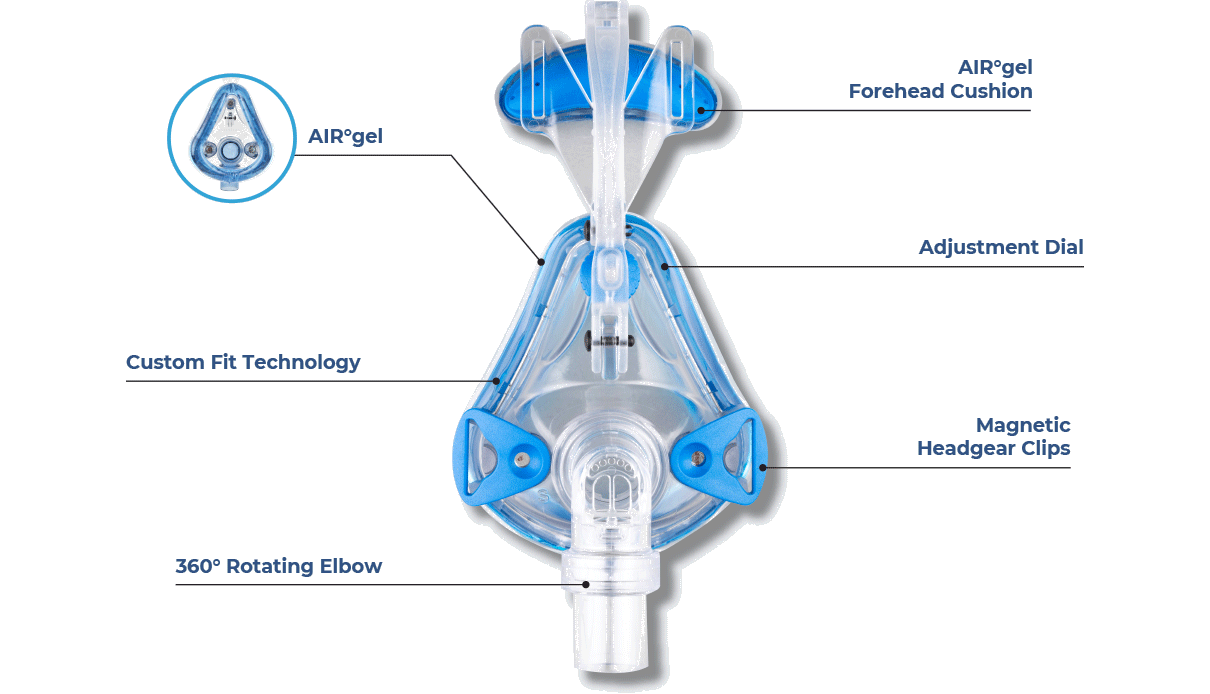
Features
Frequently Asked Questions
Adjust the Fit: The first step is to ensure a proper fit. Follow the manufacturer's instructions for adjusting the straps and headgear to create a secure seal without over-tightening. The mask should be snug but not uncomfortable.
Position the Mask Correctly: Make sure the mask is positioned correctly on your face. For a nasal mask or nasal pillow, ensure that the nostrils are centered in the openings. For a full-face mask, ensure it covers your nose and mouth properly.
Check for Damage: Inspect the mask and its components for damage or wear. Over time, parts like the cushion, headgear, and straps can degrade, causing leaks. If you notice any damage, consider replacing the necessary parts.
Clean the Mask: A clean mask can provide a better seal. Regularly clean the mask and cushion as per the manufacturer's guidelines. Both debris and oils from your skin can accumulate on the mask's silicone cushion, leading to leaks.
Address Facial Hair: Facial hair can interfere with the mask’s seal. If you have facial hair, consider trimming it or using a different type of mask that may be more compatible with your facial hair.
Try Different Mask Types: If you've tried different adjustments and your current mask still leaks, consider trying a different style of CPAP mask. There are nasal masks, nasal pillows, and full-face masks, each designed to cater to different needs and facial structures.
Use Mask Liners or Sealants: Some users find success by using mask liners or sealants designed to help create a better seal and reduce leaks. Place liners or sealants between your skin and the mask cushion.
Consult Your CPAP Provider: If you're still experiencing leaks despite trying these steps, it's a good idea to consult your CPAP provider or sleep specialist. They can offer personalized advice and suggest a mask fitting or adjustments based on your needs.
Remember that achieving a perfect seal may take trial and error. It's essential to be patient and persistent while you work toward finding the best solution for your comfort and effective therapy.
Material: The material of the mask cushion and its interaction with your skin can be influenced by temperature. Some materials become more pliable and conform to your face better as they warm up. Others may become less pliable in cooler conditions.
Sweating: If you sweat during sleep, the moisture can impact the mask’s seal. Sweating can cause the mask cushion to lose grip on your skin, leading to leaks.
Skin Oils: Your skin produces natural oils, and body temperature can influence the production of these oils. These oils can accumulate on the mask cushion, affecting its seal over time.
Humidity: The humidity level in your sleeping environment can also play a role. If the air is too dry, it might affect the comfort of the mask and the skin, potentially leading to more leaks.
If you're experiencing consistent problems with your Sleepnet mask seal due to temperature-related issues, it's a good idea to consult your CPAP provider or sleep specialist for further guidance. They can offer personalized advice based on your specific situation.

